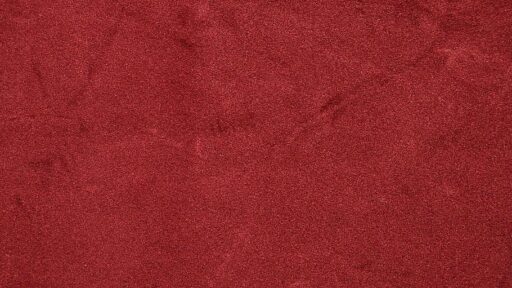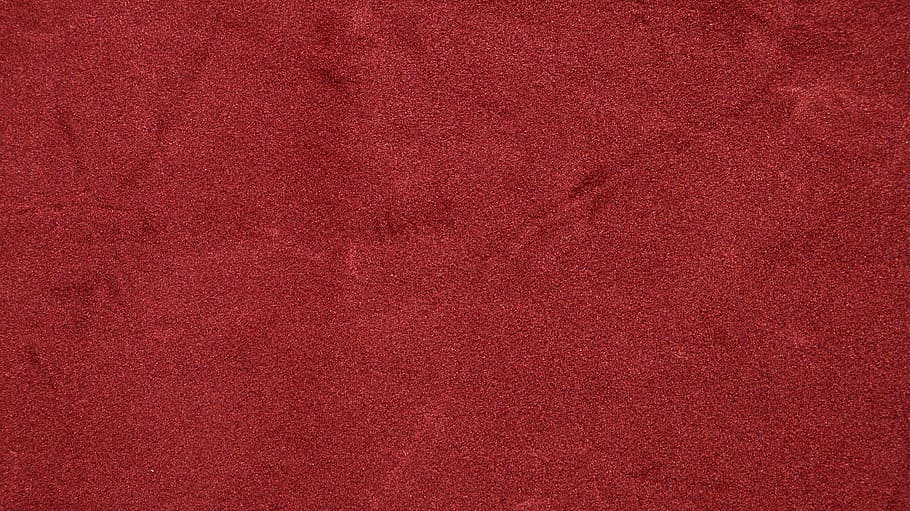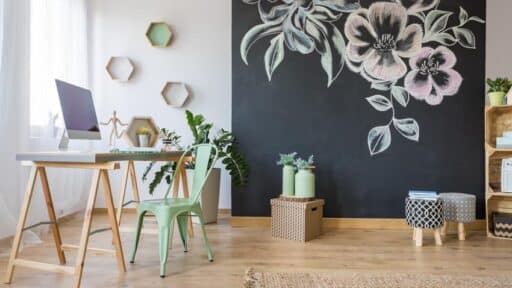What color is velvet? Is velvet a color or a fabric? Are you confused about what Velvet actually is? No worries! In this article, we will explore most things associated with velvet colors.
Let’s begin by asserting that Velvet is a color and a Fabric. Speaking of its origin, It came from Eastern culture in the 13th century and was woven using silk and linen, using a special weaving process that utilizes more threads in the warp than other flat textiles.
It is made of silk, silk/rayon blend, or polyester. The technique to create Velvet was exclusive, making it an expensive fabric afforded only by Royals or the very rich. 100% silk velvet is still quite rare and very expensive. The fabric has a sheen and a deep color, and the appearance changes as it drapes and folds.
The thick, luxurious fabric that has earned its reputation for providing warmth and luxury has been utilized in fashion and upholstery for decades. The durable and strong fabric ensures minimal chances of pulling, looping, or piling.
Let’s delve further into understanding the Velvet colors and the velvet fabrics available in all the different colors.
Is Velvet a Color or Texture?
Velvet is a color as well as a fabric that was famous for its trademark color, red, used by royalty. However, now it is known for its texture. There are 17 types of velvet material, and they are available in multiple colors. Earlier, it was available in red and blue, but it wasn’t famous for these colors among the clergy and royals. It was the texture that made it prestigious. We have explained in detail the difference between the two below. Earlier referred to as a color, it became known as a fabric available in different colors.
Velvet Color
Velvet Color is one of the shades of the color red. It belongs to the family of Dark Crimson. The actual color “velvet” has always been considered a shade of red and is a mix of red and crimson. Historically, the color was assigned to clergymen as a mark of their devotion to God and his decrees.
It is also referred to as the color of passion and affection. The color is a mix of light red and black red. The color has been favored to be used for weddings and other ceremonies as it has always been considered a royal color. The use of this color isn’t just restricted to clothes or upholstery; it is also used in kitchen cabinets, bags, bed sheets, decorations, etc. You can even find a crayon named Velvet.
Technically speaking, the hex code for velvet color is #e5c0dc. Velvet color is composed of 58% red, 18% green, and 25% blue. The shades red and purple are RGB: 126, 53, 77- HSL-0.95,0.41 and 0.35.
Fun Fact: The color Velvet is not in the list of web colors and hence cannot be found in HTML or CSS code online. To get the exact velvet color to a web page, you must put hex, RGB, or HSL values.
Can You Make Velvet Color Dye at Home?
Making the original velvet color at home has become a simple process. You can make the color using three dyes, which are Red, blue, and green, in the specified ratio. Just mix 58% red, 18% green, and 25% blue, and you can get the accurate velvet shade at home.
What Colors Was Velvet Originally Found In?
Since its evolution, Velvet has been made in deep red, reddish-purple, or blue. These were the two colors velvet was primarily associated with. Even green was used by many in the earlier era. Some nobles preferred blue over red and vice versa. Either way, these were the two dominant colors linked with velvet. Let’s understand why Velvet was originally available only in these shades and how they evolved.
1. Red: The Primary Velvet Color
Velvet has always been associated with the shade Red. The original velvet shade was reddish-purple and was reserved specifically for the nobles and royals. The shade “Royal Red” was worn by crown families in the Middle East, Europe, and East Asia from the 14th century till date.
Naturally available ingredients like plants, fruits, insects, or vegetables were used to derive the hue red, which gave the color its authenticity; however, over the centuries and evolution in the dying process, the color red was not restricted to one shade. The red referred to was a deep shade of red, which was derived using natural dyes. With time, velvet is available in most tones and shades of red, like crimson, blood red, ruby red, etc.

2. Blue
Earlier, the color blue was similar to the sapphire shade and was used by. Velvet blue is available in four shades: Cetacean Blue, Dark Imperial Blue, Cadmium Blue, or Bluebonnet. Dark velvet blue is more attractive than light blue. RGB color code for blue velvet is 13, 97, 131.
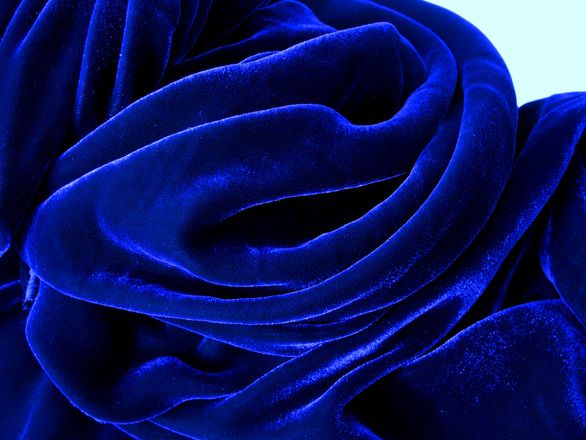
3. Black Velvet
Black velvet gained popularity in the 15th century and was initially made by mixing dark blue with purple. Now, the color is formulated by mixing red, blue, and yellow pigments. The RGB color code for Black Velvet is RGB (34,34,51). The color is derived from the violet family. It has been used to make clothes and sofa covers. Have you ever come across Black cushion covers, or black velvet bed sheets or curtains, and don’t they look magnificent? The term “Black velvet” is also used to refer to the exquisite taste of alcohol.
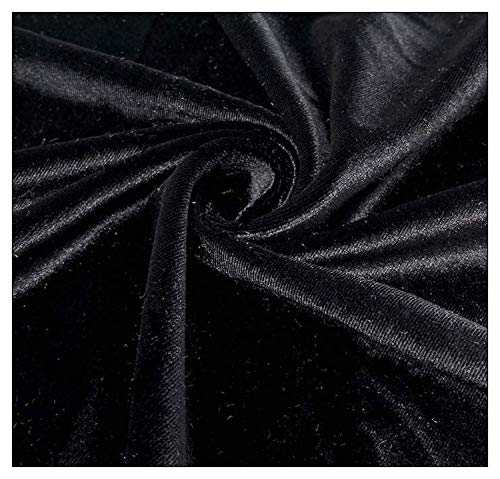
What Colors Can You Find Velvet In, and How Are They Made?
You can select the velvet fabric from 40 different color shades. Other colors of Velvet can be derived by mixing the three primary colors with the color you select. You can change the shade as per the ratio of the three primary colors used. Green, brown, purple, and orange colors are made by mixing the primary colors with another shade of primary color. The shade you desire depends on your taste and the ratio you use.
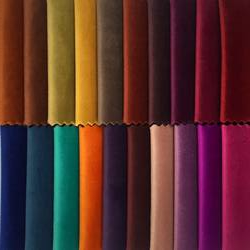
How Did the Colors for Velvet Evolve?
The fabric has evolved not only in the availability of colors but also in the texture types. Today, you can find different velvet types, like crushed velvet, embossed velvet, plain velvet, and pile-on-pile velvet. In total, there are 17 different types of velvet available in all colors. Pure velvet is rare to find in today’s time, and even if you do find it, it will be very expensive.
Earlier, velvet was found only in primary colors like red and blue because the dyeing methods applied were simple, using natural ingredients like vegetables, plants, fruits, or insects.
Over the years, methods used to dye the color have evolved, and velvet is easily available in all colors like yellow, pink, brown, magenta, deep red, crimson, or ruby. Purple velvet is another shade that has been linked with royalty. The fabric, which is now dyed synthetically, soaks up the colored dye, and the texture creates a series of hues within the fabric itself.
You can use this lush fabric in most colors to get the luxurious look you desire. Green velvet in winter, while blue in spring. Pink and yellow velvet shades make an exceptional color palette for bridesmaids’ dresses, while orange velvet can be used in your Halloween outfits.
How Can You Use Velvet?
Velvet color means wine color, which has been known as the color of love. A best-seller on valentines Day, most things are available in the shade. Gift boxes, jewelry boxes, rose boxes, etc., in the velvet color have been a trend for decades, and the fad hasn’t mellowed down even today.
Speaking of the fabric, velvet is still linked with richness. Hence, people like to incorporate the fabric in fancy events to use for decor and decorations. Velvet drapes, Velvet chairs, cushions, sofas, and divans incorporate the fabric for the look of elegance.
You can make the best use of velvet for any purpose. It depends on your taste, purpose, and your preference. If you’re confused about how to make the best use of velvet, you can even seek professional help.
Have you considered getting chairs with green cushioning for your all-white interiors? Go for it. You can add this regal shade to your home in multiple ways to increase the aesthetics of your home. Another way to use velvet fabric is Velvet curtains. Consult your decorator to seek any guidance and advice in that regard.
Conclusion
In the earlier centuries, Velvet was used to describe a color, and now it is used to describe a texture. Velvet has always been associated with Opulence and romance.
Traditionally set in deep-jewel-toned colors, the fabric has seen an evolution in the colors and also the clientele. Pure velvet, which is made using 100% silk, is rarely found and can be very expensive, even today. Synthetic Velvet has seen a rage over the centuries and has been the favorite color and fabric to use in most celebrations and ceremonies.
The color is used in most objects like clothing, upholstery, furniture, etc. What was originally referred to as a color has now been defined as a texture? The color and fabric can be mixed with other colors beautifully, depending on your taste. Once considered a status symbol, Velvet has become a regular shade to be used by all. Hopefully, this article highlighted any of your doubts regarding the velvet color.

